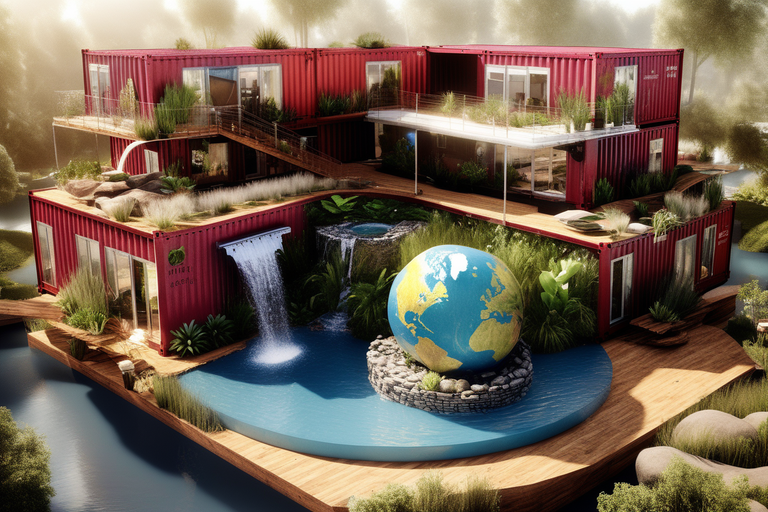In recent years, there has been a growing interest in alternative housing solutions that are not only affordable but also sustainable. One such solution gaining popularity is shipping container construction for tiny homes. These compact and versatile structures offer an eco-friendly approach to building homes, making them an ideal choice for eco-villages. In this article, we will explore the key aspects of shipping container construction, focusing on affordability, dependability, sustainability, and versatility.
One of the most significant advantages of shipping container construction is its affordability. Traditional housing can be incredibly expensive, making it unattainable for many individuals and families. However, repurposing shipping containers as tiny homes provides a cost-effective solution. Containers are readily available and can be purchased at a fraction of the price of conventional building materials. Additionally, the modular nature of containers allows for easy expansion or modification, making it possible to create larger living spaces as needed.
Shipping containers are designed to withstand extreme weather conditions and the rigors of transportation across oceans. This inherent durability makes them an excellent choice for constructing tiny homes. Built to last, these containers can withstand high winds, heavy snow loads, and even earthquakes. Their sturdy steel structure ensures the safety and security of the occupants, providing peace of mind in any location.
With the increasing concern for our environment, sustainable housing options are gaining momentum. Shipping container construction offers an eco-friendly alternative by repurposing existing materials. By reusing containers that would otherwise go to waste, we reduce the demand for new construction materials and minimize the carbon footprint associated with traditional housing. Additionally, using containers reduces the need for deforestation, as timber is a common building material. Furthermore, incorporating sustainable practices such as solar panels, rainwater harvesting systems, and energy-efficient insulation can transform shipping container homes into truly sustainable living spaces.
Shipping containers are incredibly versatile, allowing for endless design possibilities. With their modular nature, containers can be stacked, joined, or arranged in various configurations to create unique and customized living spaces. The interior layout can be tailored to individual needs, with options for open-concept living, separate rooms, or even multi-level structures. Furthermore, containers can be easily transported and relocated, giving residents the freedom to move their homes within an eco-village or to a new location entirely.
Shipping container construction is a perfect match for the concept of eco-villages. These intentional communities prioritize sustainability, self-sufficiency, and social cohesion. By using shipping container homes, these communities can encourage eco-friendly living while also fostering a strong sense of community and shared responsibility. The affordability of container homes allows for a diverse range of individuals to be a part of these communities, resulting in a lively and inclusive living environment.
In conclusion, shipping container construction for tiny homes offers a compelling solution for affordable, dependable, sustainable, and versatile housing. These eco-friendly structures are not only cost-effective but also durable and resilient. By repurposing shipping containers, we reduce waste and minimize the environmental impact associated with traditional construction methods. Furthermore, the adaptability of containers allows for creative design options, making them an attractive choice for eco-villages. As the world continues to search for sustainable housing solutions, shipping container construction is proving to be a viable and eco-conscious alternative.




